In a divorce, the laws of equitable distribution distinguish marital property from separate property. Technically, only marital property, that is, proper...
In Colorado, if you get into a car accident that results in any type of property damage, injury, or death, you must immediately report the crash to police. After an officer responds to your accident to secure the scene and investigate the cause of the collision, the officer will complete a State of Colorado Traffic Crash Report (DR 3447) and submit it to the Colorado Department of Revenue. This report contains many important details about your accident and can be a significant piece of evidence when trying to recover compensation for your damages through a personal injury claim.
Under Colorado’s modified comparative negligence law, you may not recover damages from another party if you are found to be 50% or more at-fault for your accident. Since insurance companies look for details in the police accident report to help prove fault, it’s critical that you know how to read your crash report and take steps to correct anything in it that might be wrong.
You can get a copy of your crash report from the state Department of Transportation or by contacting a Colorado car accident lawyer for help. An attorney can also help you get the crash report amended if it contains the wrong information or if you disagree with the investigating officer’s determination of how your accident occurred.
State of Colorado Traffic Crash Report (DR 3447))
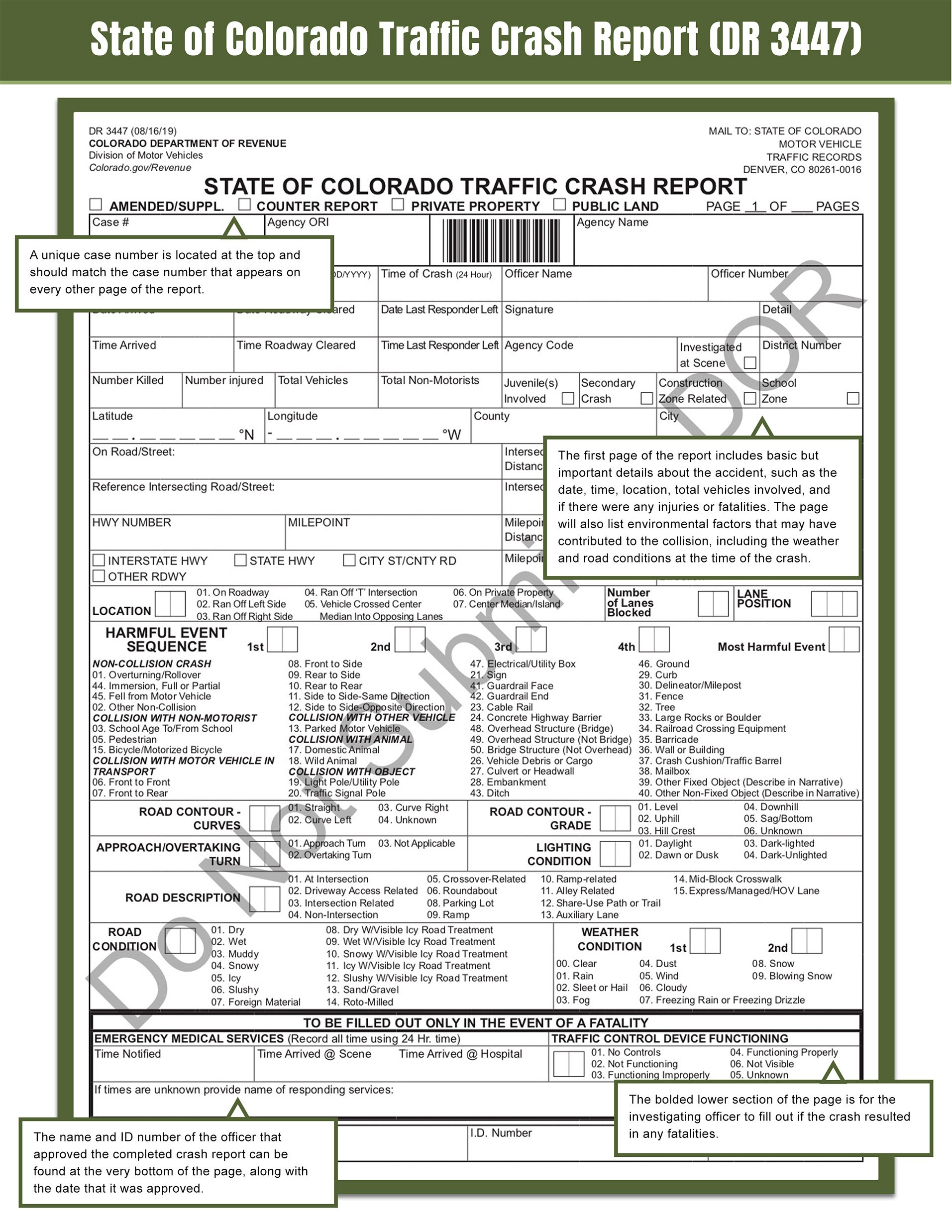
Page 1 (Crash Information)
A unique case number is located at the top and should match the case number that appears on every other page of the report.
Click here to download a printable PDF of How to Read Your Colorado Accident Report.
The first page of the report includes basic but important details about the accident, such as the date, time, location, total vehicles involved, and if there were any injuries or fatalities. The page will also list environmental factors that may have contributed to the collision, including the weather and road conditions at the time of the crash.
The bolded lower section of the page is for the investigating officer to fill out if the crash resulted in any fatalities.
The name and ID number of the officer that approved the completed crash report can be found at the very bottom of the page, along with the date that it was approved.
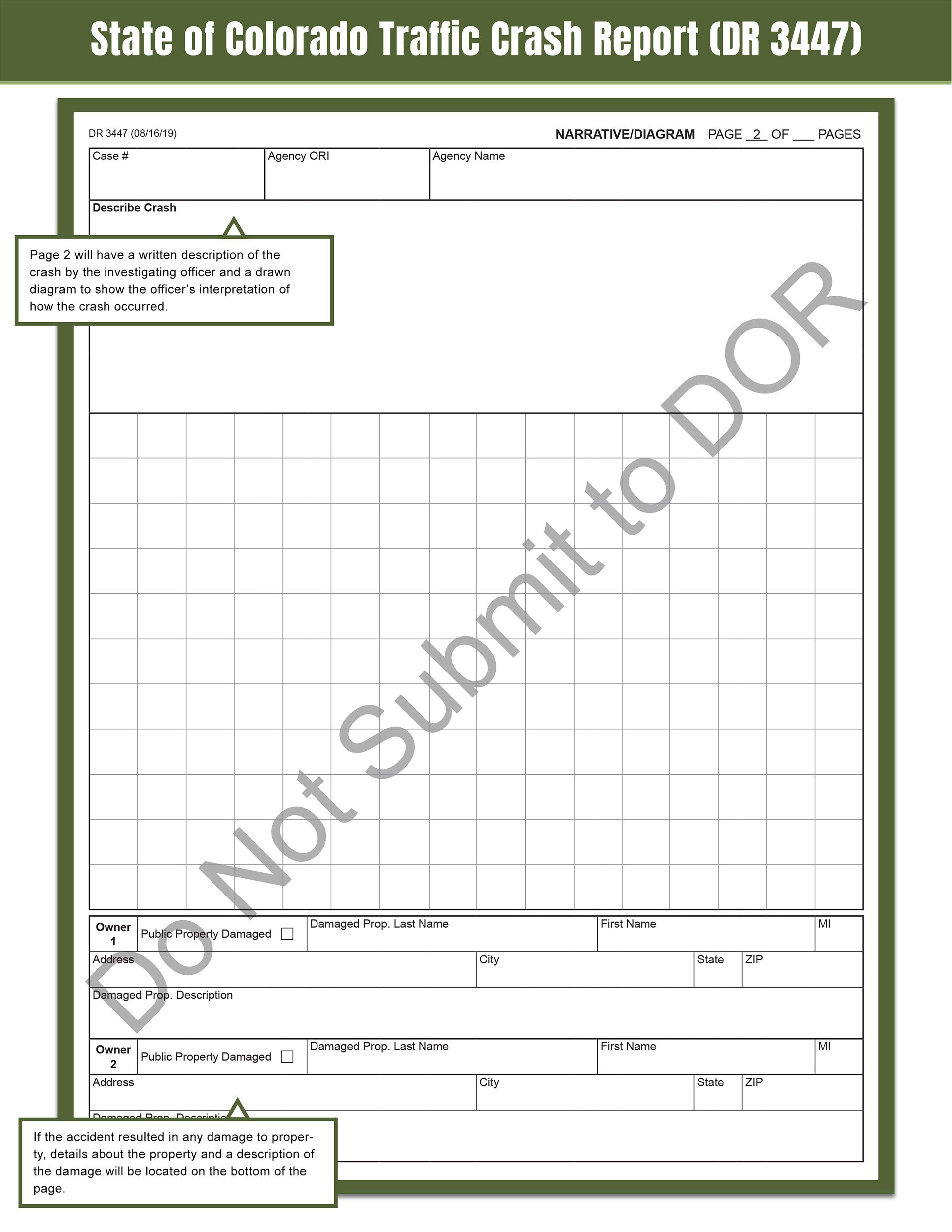
Page 2 (Narrative / Diagram)
Page 2 will have a written description of the crash by the investigating officer and a drawn diagram to show the officer’s interpretation of how the crash occurred.
If the accident resulted in any damage to property, details about the property and a description of the damage will be located on the bottom of the page.
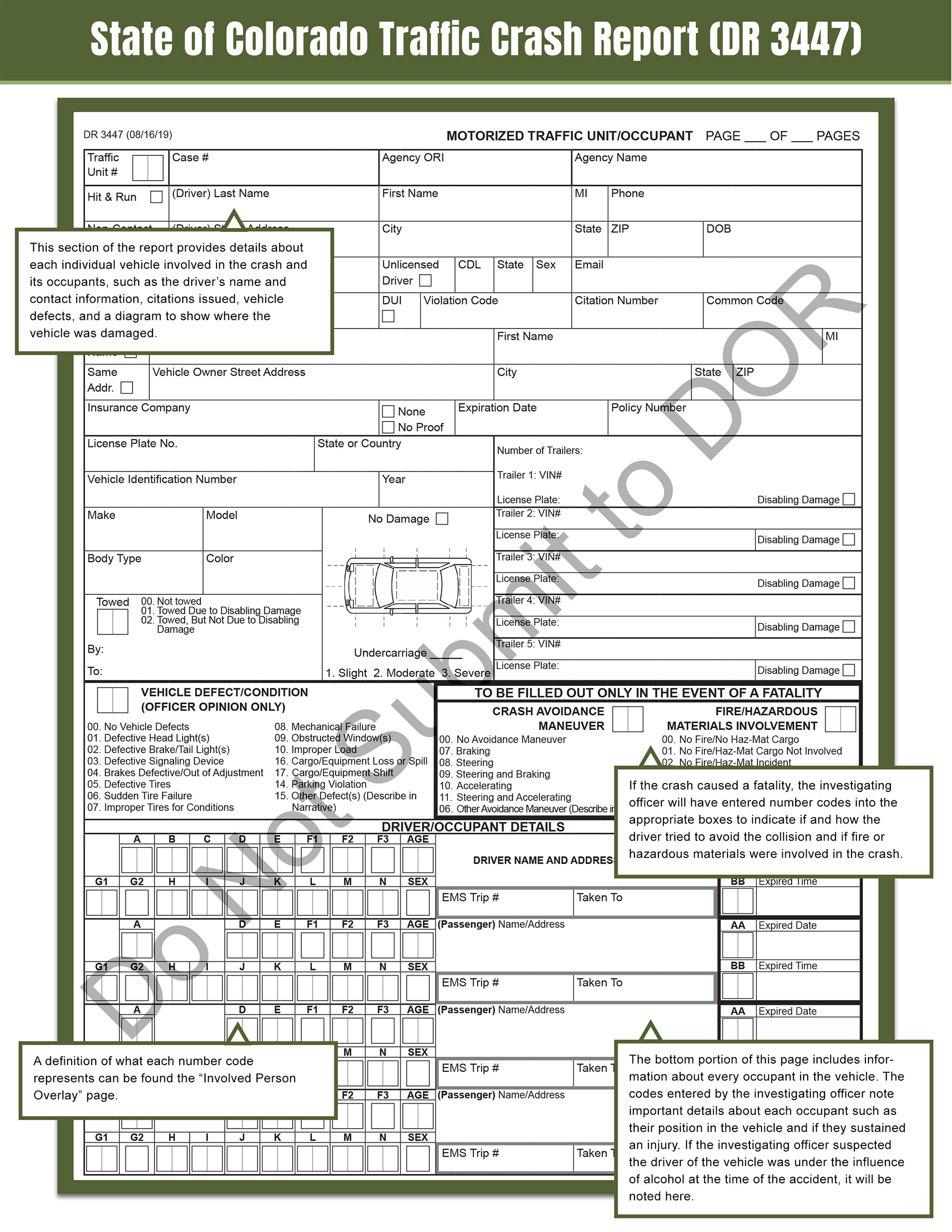
Page 3 (Motorized Traffic Unit / Occupant)
This section of the report provides details about each individual vehicle involved in the crash and its occupants, such as the driver’s name and contact information, citations issued, vehicle defects, and a diagram to show where the vehicle was damaged.
If the crash caused a fatality, the investigating officer will have entered number codes into the appropriate boxes to indicate if and how the driver tried to avoid the collision and if fire or hazardous materials were involved in the crash.
The bottom portion of this page includes information about every occupant in the vehicle. The codes entered by the investigating officer note important details about each occupant such as their position in the vehicle and if they sustained an injury. If the investigating officer suspected the driver of the vehicle was under the influence of alcohol at the time of the accident, it will be noted here.
A definition of what each number code represents can be found the “Involved Person Overlay” page.
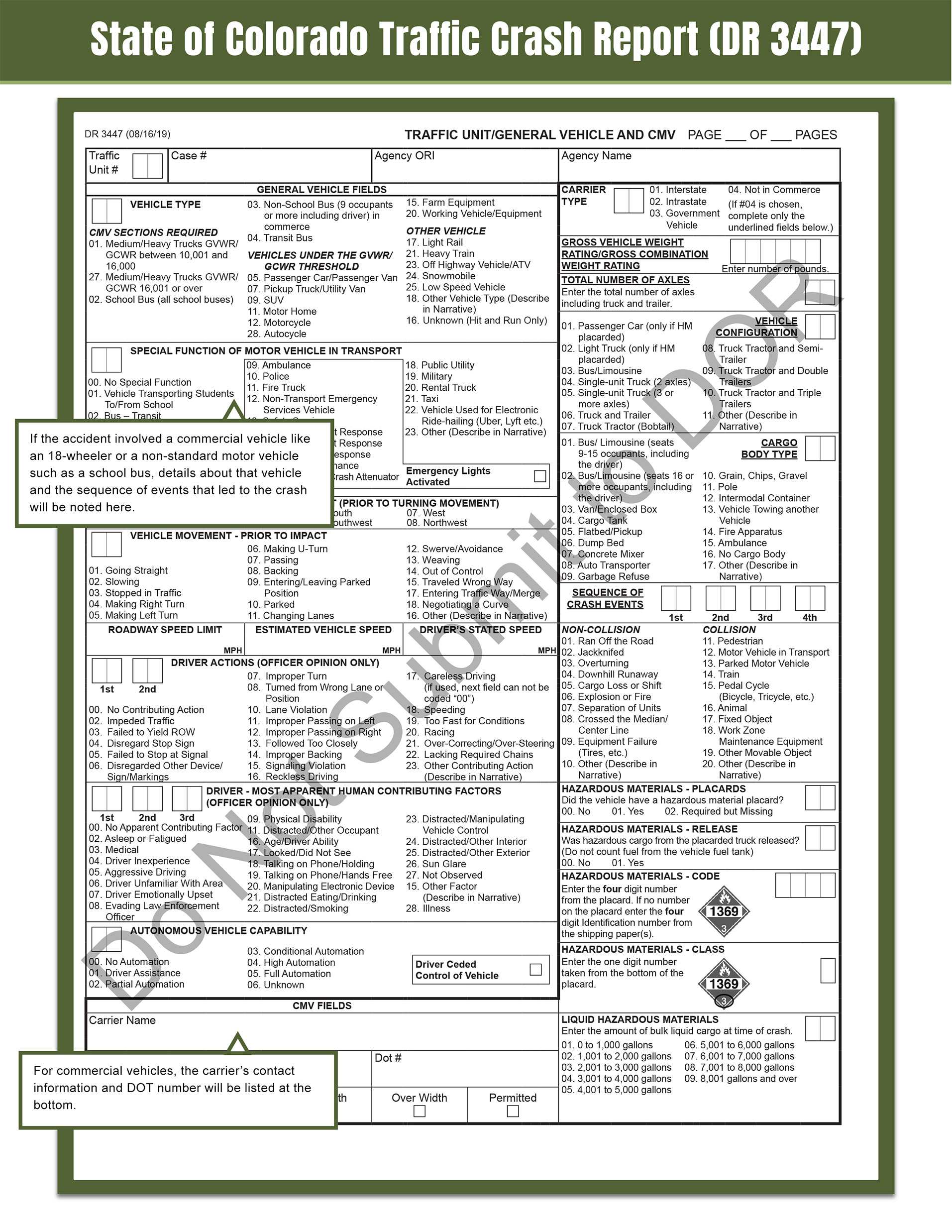
Page 4 (Traffic Unit / General Vehicle and CMV)
If the accident involved a commercial vehicle like an 18-wheeler or a non-standard motor vehicle such as a school bus, details about that vehicle and the sequence of events that led to the crash will be noted here.
For commercial vehicles, the carrier’s contact information and DOT number will be listed at the bottom.
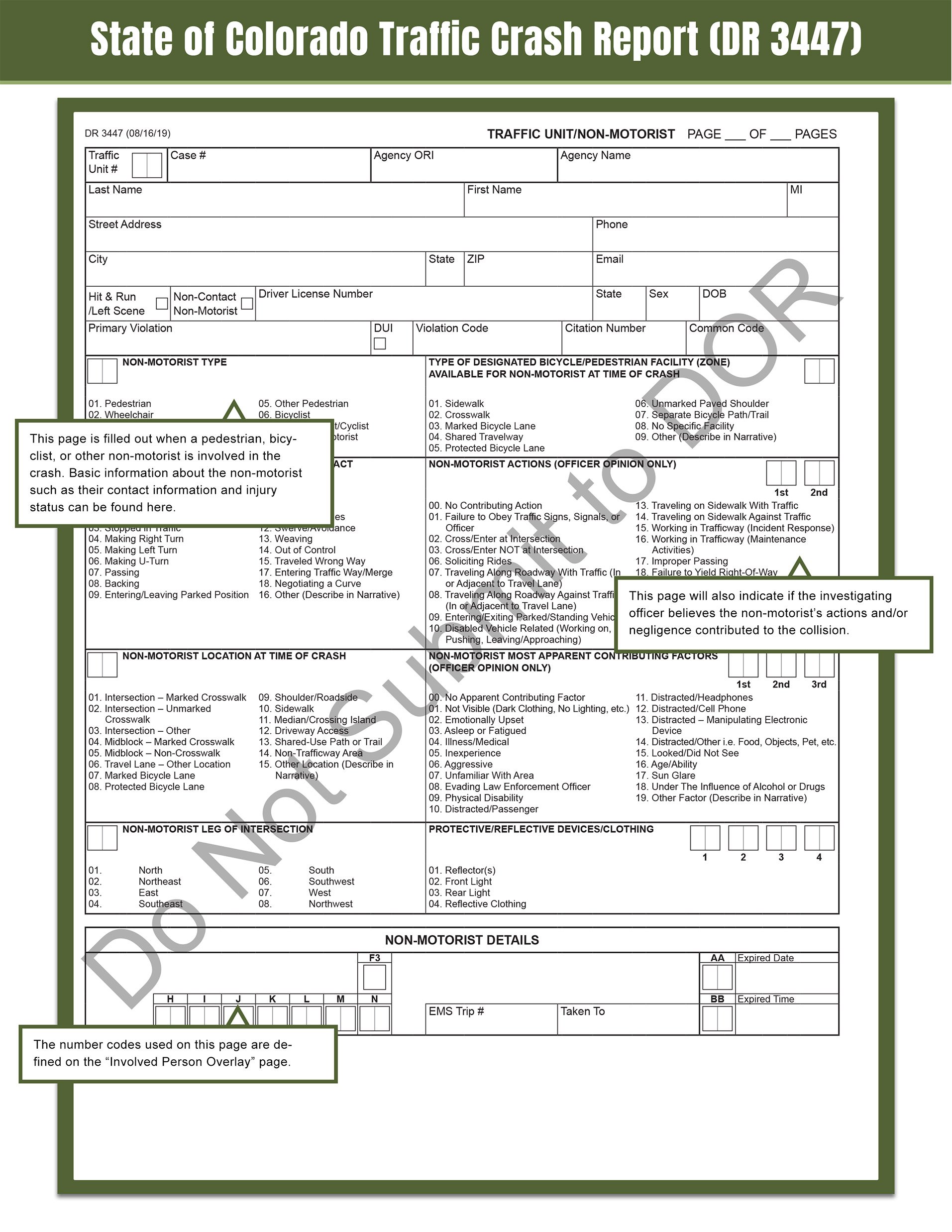
Page 5 (Traffic Unit / Non-Motorist)
This page is filled out when a pedestrian, bicyclist, or other non-motorist is involved in the crash. Basic information about the non-motorist such as their contact information and injury status can be found here.
This page will also indicate if the investigating officer believes the non-motorist’s actions and/or negligence contributed to the collision.
The number codes used on this page are defined on the “Involved Person Overlay” page.
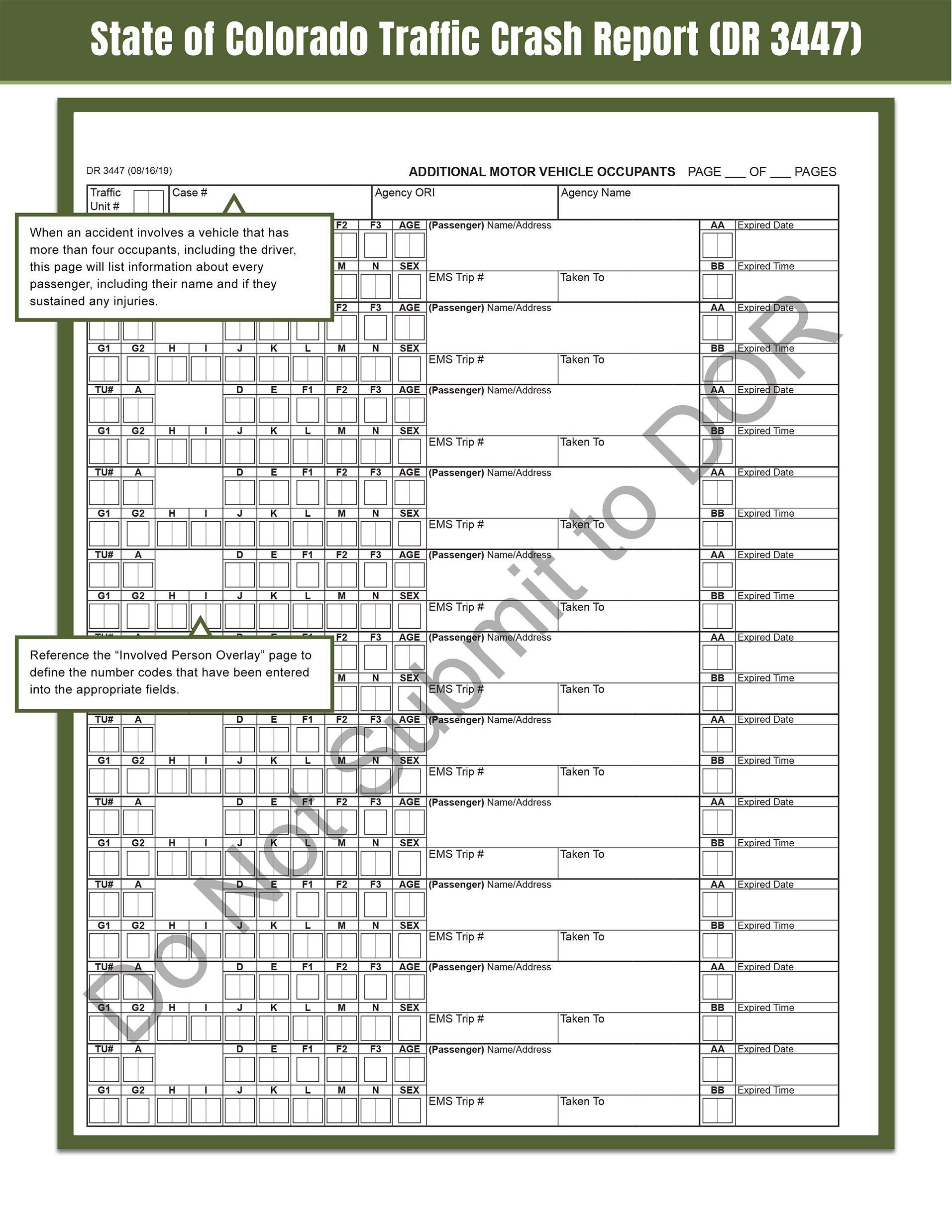
Page 6 (Additional Motor Vehicle Occupants)
When an accident involves a vehicle that has more than four occupants, including the driver, this page will list information about every passenger, including their name and if they sustained any injuries.
Reference the “Involved Person Overlay” page to define the number codes that have been entered into the appropriate fields.
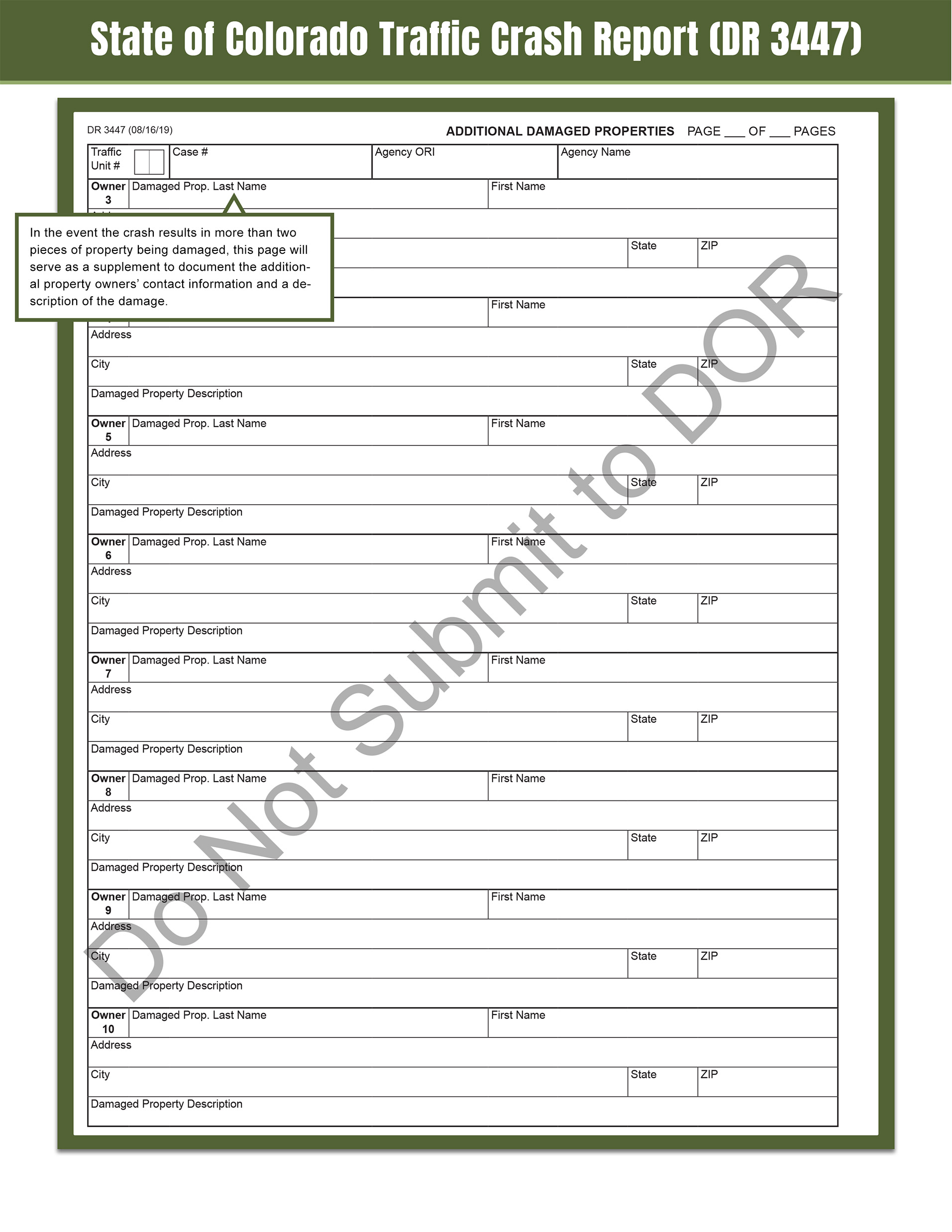
Page 7 (Additional Damaged Properties)
In the event the crash results in more than two pieces of property being damaged, this page will serve as a supplement to document the additional property owners’ contact information and a description of the damage.
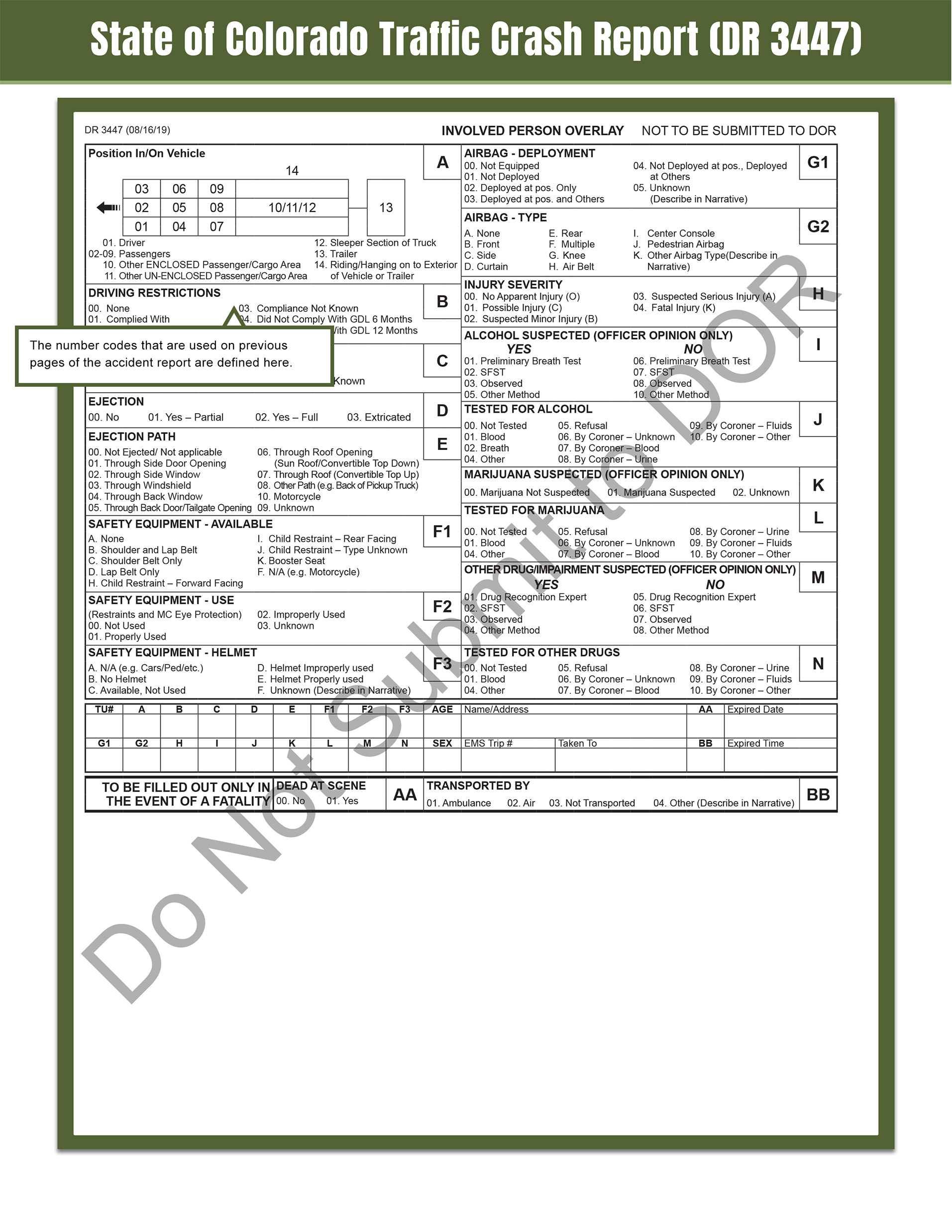
Page 8 (Involved Person Overlay)
The number codes that are used on previous pages of the accident report are defined here.





